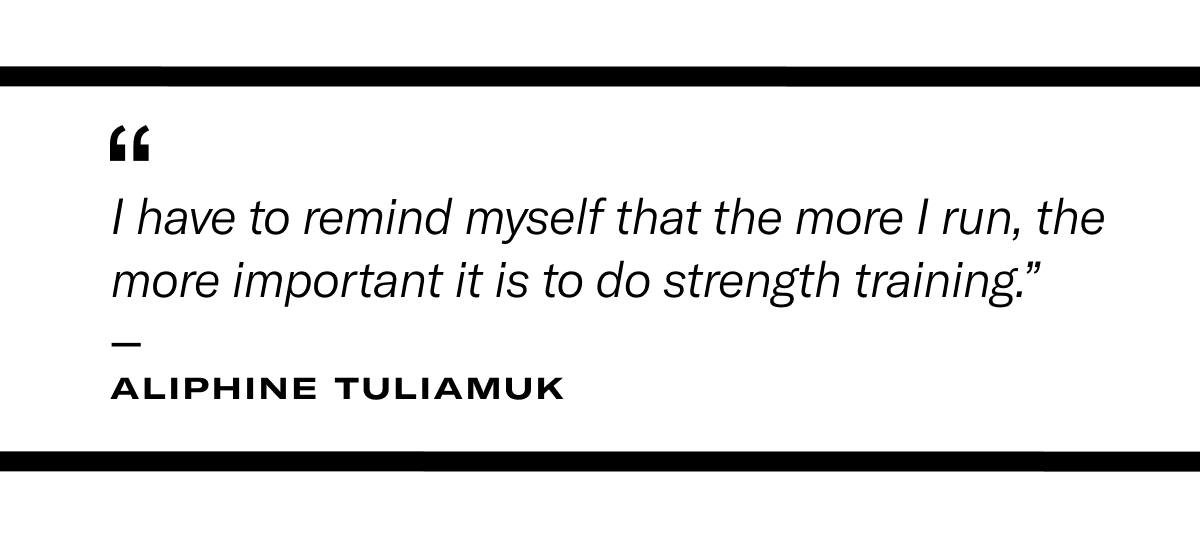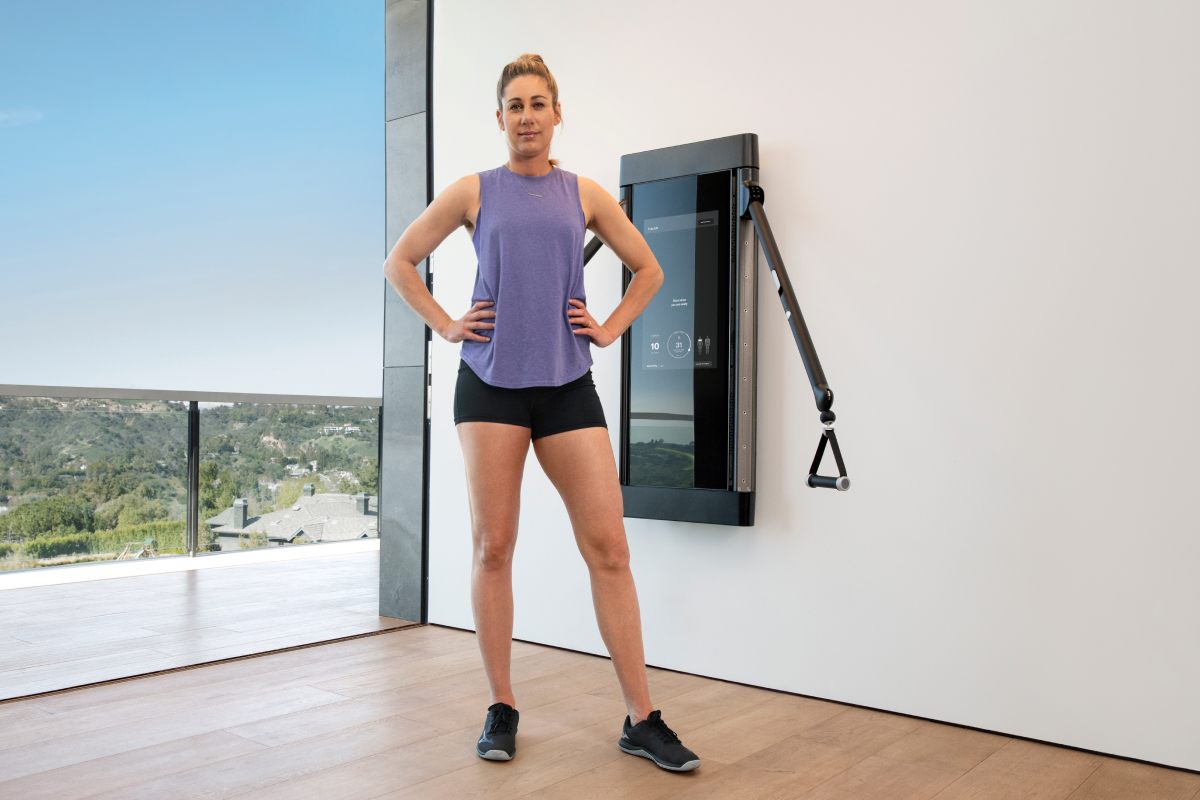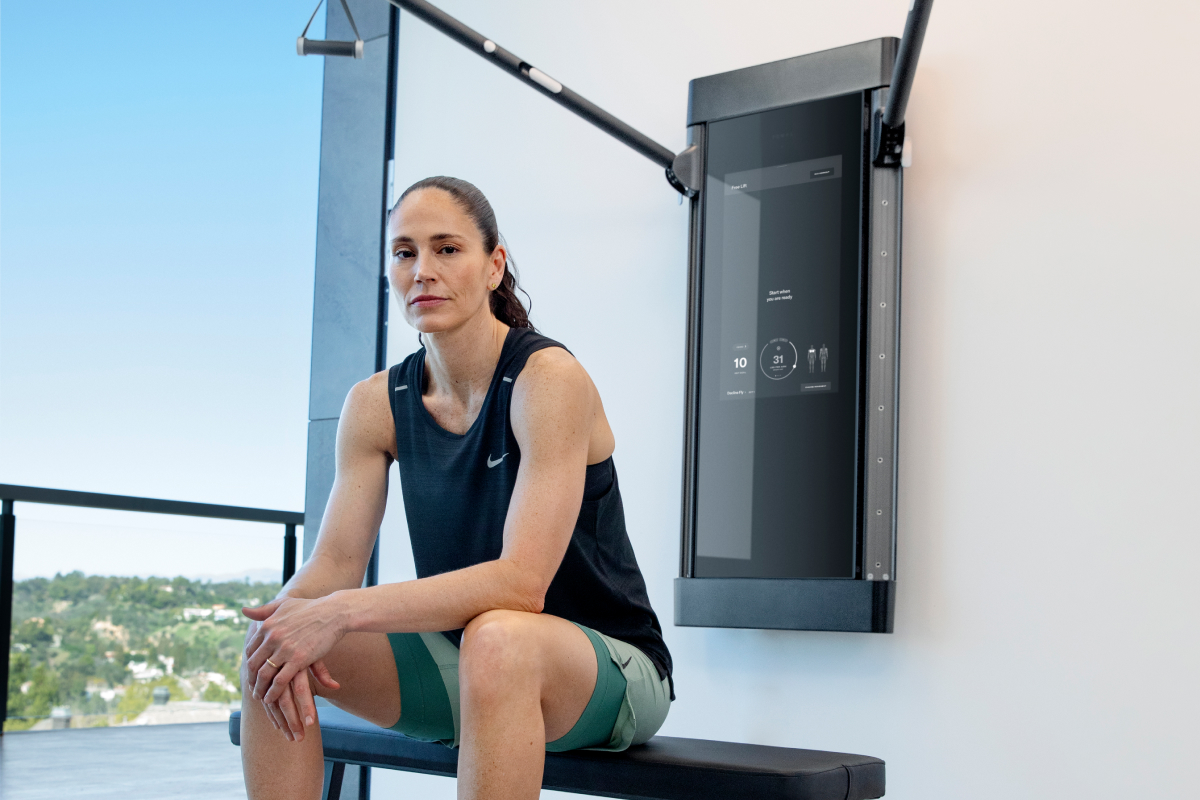The marathoner and new mom is rebuilding power and speed after injuring her hip.

Ten miles into the marathon, Aliphine Tuliamuk knew she was done. It was a sweltering August day in Sapporo, a coastal city 680 miles north of Tokyo, and Tuliamuk still had 16 miles to go. But the pain in her left hip that had started as just a hot spot at the beginning of the race was raging more with every step, pulling her far behind the pace she would need to place—or even to finish respectably.
The mental gymnastics began, she told Tonal in an interview. For two more miles, Tuliamuk debated with herself: Is it better to gut it out and limp to the finish line, or to pull out and live to fight another day? In the end, she thought, “If I stop now, maybe it will help me in the long run,” and chose the latter.
It’s a decision no athlete wants to face, but it didn’t catch Tuliamuk completely off guard. The Kenyan-born former Wichita State University All-American welcomed her daughter Zoe just six months earlier, in January 2021. Since Zoe’s birth, Tuliamuk struggled with psoas tightness, pelvic instability, and a weak core, all of which are common postpartum issues.
Unlike most new moms, however, Tuliamuk was also running twice a day to return to elite racing form. In mid-July, when she experienced a sharp pain she describes as “ a knife shooting out of her glutes,” an MRI showed a stress reaction—a precursor to a fracture–in her pelvis. Because it wasn’t a break, Tuliamuk dismissed the injury. Like most elite distance runners, she was used to pushing through a considerable amount of discomfort. “When you’re a marathoner, you know you can never be 100-percent pain-free,” she said. “So I never really thought it was a serious thing.”
After Tokyo, a second MRI showed the injury had, in fact, progressed to a full fracture, and that the only course of treatment was a lengthy period of time away from running. It was a sad outcome for Tuliamuk, who had won the U.S. Trials in April 2020 on a tough Atlanta course with a blistering time of 2:27:23, just 33 seconds off her personal best.
Now, as Tuliamuk plans a return to racing at the Pittsburgh half marathon in early May after nine months of rehabbing her hip, she’s finally starting to feel like her former self.
Turning Pain into Power
In order to rediscover her strength and power, Tuliamuk has rededicated herself to strength training. Like many long-distance runners, Tuliamuk has never actually enjoyed strength training; she calls it a “necessary evil.” She also realizes that as she ages, strength training is even more important to bulletproof her body against further injury. That’s because it can help to restabilize her pelvis and correct compensatory patterns and, in turn, solidify her running form. This is especially important as Tuliamuk has been ramping up her training and re-settling into her two-a-day running schedule. “I have to remind myself that the more I run, the more important it is to do strength training,” she said.

For years, Tuliamuk reluctantly hit the gym twice a week under the guidance of her strength coach AJ Gregg, a doctor of chiropractic and certified strength and conditioning specialist. But with her running schedule and Zoe to care for, excuses come more easily.
Now with Tonal, she performs all the exercises she used to do in the gym at home, and the ability to work out while also keeping an eye on Zoe even allows her to squeeze in extra “mini sessions” throughout the week. The exercises Tuliamuk focuses on most (think: plank variations and resisted hip raises) strengthen her glutes and core—especially her psoas, lower abdominals, and adductors, which weakened during pregnancy.
“The extra training has accelerated her strength gains, and her problem areas are also improving, which speaks to how effective Tonal can be when used correctly, even in a rehab scenario,” Gregg said. “Training everything from the trunk down—the ‘supporting cast’ to some of her issues—has further increased her durability and resilience.”
Moves such as squats, split squats and deadlifts also increase her power, which especially pleases Tuliamuk’s running coach Ben Rosario. “She needs to be an athlete, not just a runner,” Rosario said. “We need her to be super powerful in order to run fast.”
And though her love-hate relationship with strength training continues, Tuliamuck has learned to appreciate it because she’s feeling the results. “I definitely like it when I’m doing something and it feels really painful, and when I can feel the next day that I’ve really worked those muscles,” she said. “I’m improving, I can handle certain weights better now than I did a week ago, and I feel like I need to run faster, because I’m getting so much stronger.”

Getting Back up to Speed
Pushing the pace is no small feat when Tuliamuk’s typical, pre-injury marathon clip is around 5:30 per mile. When she’s taking it easy in practice, she’ll slow down to “comfortable” 5:40s. After several months of focused dedication to both her strength training and her running workouts, those paces are within reach again.
Tuliamuk will put herself to the test with 13.1 miles in Pittsburgh on May 1, which she considers her first race in two years. (She doesn’t count Tokyo, because she wasn’t able to put forth her best effort.) Rosario said he sees none of the fragility in her that he saw in the lead-up to Tokyo, and her running form looks like it did both pre-injury and pre-pregnancy.
Tuliamuk’s goal in Pittsburgh will be to get the most out of herself and to re-learn how to be comfortable inside the pain cave of racing again. But her bigger goal for 2022 is a full marathon. She looks back on her victorious day at the 2020 U.S. Trials for motivation. “I felt great that day,” she said. “I felt powerful. I will get back there, and in fact, get even better than that. And I’m really excited to even think about that.”
The information provided in this article is for educational and informational purposes only. Individuals with pre-existing health conditions, injuries, or concerns should consult with their healthcare provider before trying a new exercise or nutrition regimen.



